
Leipzig is the most populous city in the German state of Saxony. Leipzig's population of 624,689 inhabitants as of 2022 places the city as Germany's eighth most populous, as well as the second most populous city in the area of the former East Germany after (East) Berlin. Together with Halle (Saale), the city forms the polycentric Leipzig-Halle Conurbation. Between the two cities lies Leipzig/Halle Airport.
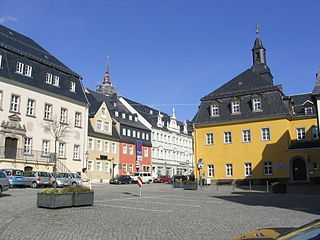
Zschopau, is a town in the Erzgebirgskreis district of Saxony, Germany.

Bottrop is a city in west-central Germany, on the Rhine–Herne Canal, in North Rhine-Westphalia. Located in the Ruhr industrial area, Bottrop adjoins Essen, Oberhausen, Gladbeck, and Dorsten. The city had been a coal-mining and rail center and contains factories producing coal-tar derivatives, chemicals, textiles, and machinery. Bottrop grew as a mining center beginning in the 1860s, was chartered as a city in 1921, and bombed during the Oil Campaign of World War II. In 1975, it unified with the neighbouring communities of Gladbeck and Kirchhellen, but Gladbeck left it in 1976, leading to Kirchhellen becoming a district of Bottrop as Bottrop-Kirchhellen. It is also twinned with Blackpool, England.
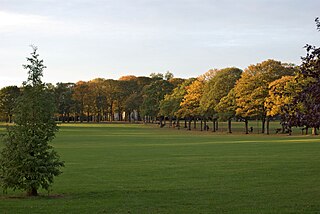
Victoria Park in Leicester, England is a public park of 69 acres. It is in the south-east, just outside the city centre, backing on to the University of Leicester and close to the Leicester railway station.
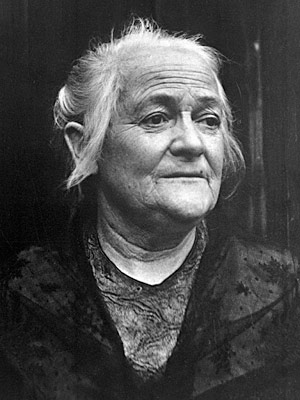
Clara Zetkin was a German Marxist theorist, communist activist, and advocate for women's rights.

Heinrich Kley was a German illustrator, editorial illustrator and painter.

The Berliner SV 92 Rugby is a German rugby union club from Berlin, currently playing in the 2. Rugby Bundesliga Ost. It is part of a larger club, the Berliner SV 92, which also offers other sports like association football, baseball and basketball.

Köllnischer Park is a public park located near the River Spree in Mitte, Berlin. It is named after Cölln, one of the two cities which came together to form Berlin; the park location was originally just outside it. Approximately 1 hectare in area, the park came into existence in the 18th and 19th centuries on the site of fortifications. It was redesigned as a public park in 1869–1873 and was further modified in the 20th century with the addition of first a bear enclosure, the Bärenzwinger, and later a permanent exhibition of sculpture, the Lapidary. The park is a registered Berlin landmark.

Walter Arnold was a German stonemason and sculptor. Between 1957 and 1964 he was the president of the Association of Visual Artists in East Germany.
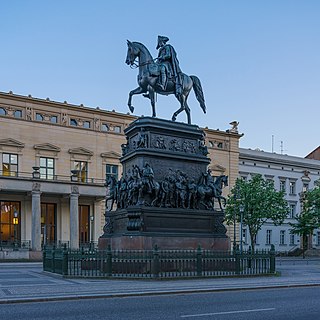
The equestrian statue of Frederick the Great on Unter den Linden avenue in Berlin's Mitte district commemorates King Frederick II of Prussia. Created from 1839 to 1851 by Christian Daniel Rauch, it is a masterpiece of the Berlin school of sculpture, marking the transition from neoclassicism to realism. The bronze statue shows "The Old Fritz" dressed in military uniform, ermine coat and tricorne hat on horseback above the leading generals, statesmen, artists and scientist of his time. Walled in during World War II, it was disassembled by East Germany in 1950, reassembled in Sanssouci Park in 1963, and returned to its original location in 1980.

Käte Duncker was a German political and feminist activist who became a politician in the Social Democratic Party of Germany and then the Communist Party of Germany.

Konstantin "Kostja" Zetkin was a German physician, social economist and political activist.

The Palmengarten is a park in Leipzig-Lindenau. It covers a surface of 22.5 hectares.
Hella Maria Brock was a German music educator, musicologist, and an internationally known Edvard Grieg scholar. Brock was professor of music and English studies at the Leipzig University. She was president, and honorary president of the Grieg-Begegnungsstätte in Leipzig until her death in 2020.
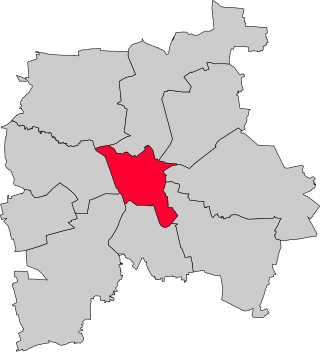
Leipzig-Mitte is one of ten boroughs (Stadtbezirke) of Leipzig, located in the center of the city. It includes numerous architectural monuments. Most of them are located in the subdivision "Zentrum", which is sited inside the Inner City Ring Road and the Promenadenring:

The Johannapark is an 11 hectares park near the city center in Leipzig. In the southwest it merges seamlessly into the Clara Zetkin Park and together with it and the Palmengarten forms a large park landscape that continues in the north and south in the Leipzig Auenwald.

The Cospudener See is an artificially constructed lake situated directly on the southern outskirts of Leipzig, Germany. Leipzig, Markkleeberg and Zwenkau have shares in the lake which is on the site of a former open cast mine. The lake is popularly known as "Cossi", more rarely "Cospi", and has become highly popular with the local population, with long stretches of sand beaches and with a sauna directly located at the lake. There is also a small sailing harbor. The lake is a part of the Central German Lake District.

The Capa House is a building in the Lindenau quarter of Leipzig, Germany at Jahnallee 61. It is named after the American war reporter and photographer Robert Capa, and is the location where Capa took The Picture of the Last Man to Die of the United States army soldier Raymond J. Bowman, who was killed there two weeks before the end of the Second World War in Europe. The images became internationally known when they were published in Life magazine.






















